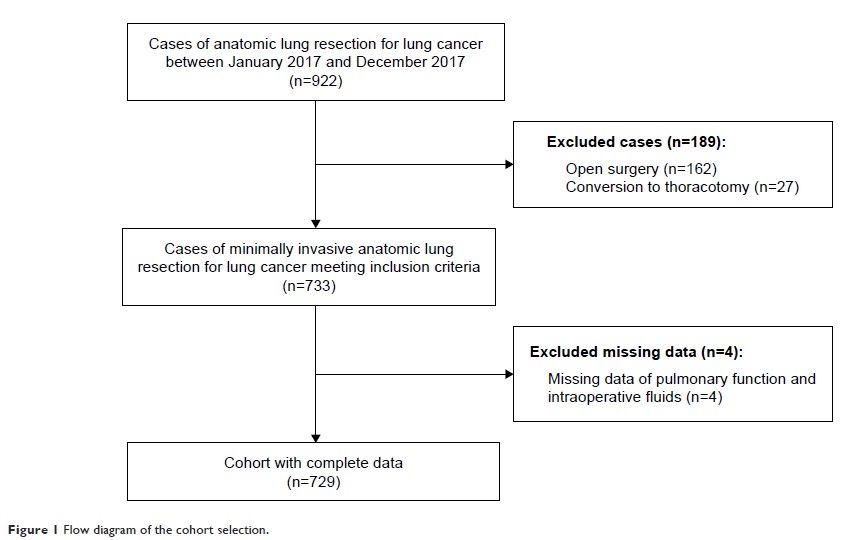108384
论文已发表
注册即可获取德孚的最新动态
IF 收录期刊
- 3.4 Breast Cancer (Dove Med Press)
- 3.2 Clin Epidemiol
- 2.6 Cancer Manag Res
- 2.9 Infect Drug Resist
- 3.7 Clin Interv Aging
- 5.1 Drug Des Dev Ther
- 3.1 Int J Chronic Obstr
- 6.6 Int J Nanomed
- 2.6 Int J Women's Health
- 2.9 Neuropsych Dis Treat
- 2.8 OncoTargets Ther
- 2.0 Patient Prefer Adher
- 2.2 Ther Clin Risk Manag
- 2.5 J Pain Res
- 3.0 Diabet Metab Synd Ob
- 3.2 Psychol Res Behav Ma
- 3.4 Nat Sci Sleep
- 1.8 Pharmgenomics Pers Med
- 2.0 Risk Manag Healthc Policy
- 4.1 J Inflamm Res
- 2.0 Int J Gen Med
- 3.4 J Hepatocell Carcinoma
- 3.0 J Asthma Allergy
- 2.2 Clin Cosmet Investig Dermatol
- 2.4 J Multidiscip Healthc

肺癌微创解剖切除术后肺部并发症的危险因素
Authors Yang R, Wu Y, Yao L, Xu J, Zhang S, Du C, Chen F
Received 17 November 2018
Accepted for publication 8 January 2019
Published 4 February 2019 Volume 2019:15 Pages 223—231
DOI https://doi.org/10.2147/TCRM.S195010
Checked for plagiarism Yes
Review by Single-blind
Peer reviewers approved by Dr Justinn Cochran
Peer reviewer comments 2
Editor who approved publication: Professor Deyun Wang
Purpose: This
study investigated the perioperative risk factors of postoperative pulmonary
complications (PPCs) after minimally invasive anatomic resection for lung
cancer.
Patients and methods: We
retrospectively reviewed the data from medical records of 729 lung cancer
patients undergoing minimally invasive anatomic lung resections between January
2017 and December 2017. Univariate and binary logistic regression analyses were
performed to select the independent risk factors for PPCs during the patient’s
postoperative hospitalization after surgery.
Results: The
incidence of PPCs was 24.8% (n=181/729). No patient died during the period
of hospitalization. Logistic regression analysis revealed that body mass
index (BMI) ≥24.0 kg/m2 (vs <24.0 kg/m2: OR 1.514, 95%
CI 1.057–2.167, P =0.024), single segmentectomy (vs
single lobectomy: OR 2.115, 95% CI 1.150–3.891, P =0.016),
bilobectomy or combined lobectomy and segmentectomy (vs single lobectomy:
OR 2.731, 95% CI 1.013–7.361, P =0.047), and right lung lobe surgery (vs left
lung lobe surgery: OR 1.519, 95% CI 1.046–2.205, P =0.028)
were independent risk factors for PPCs in lung cancer patients who
received minimally invasive anatomic lung resections.
Conclusion: Individual
factors such as BMI ≥24.0 kg/m2, single segmentectomy, bilobectomy or combined
lobectomy and segmentectomy, and right lung lobe surgery were independent risk
factors of PPCs, which should be helpful for risk stratification, patient
counseling, and perioperative care for lung cancer patients.
Keywords: lung
cancer, minimally invasive lung resection, postoperative pneumonia,
postoperative pulmonary complications, risk factors
